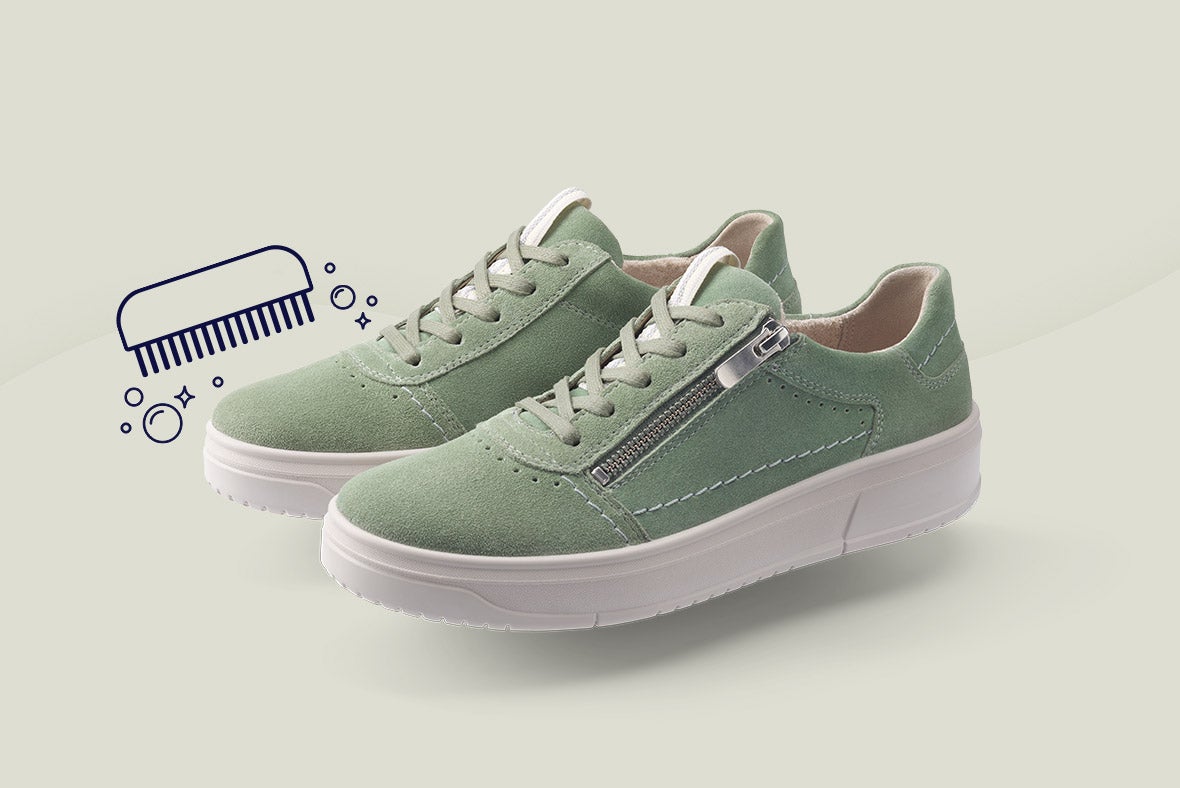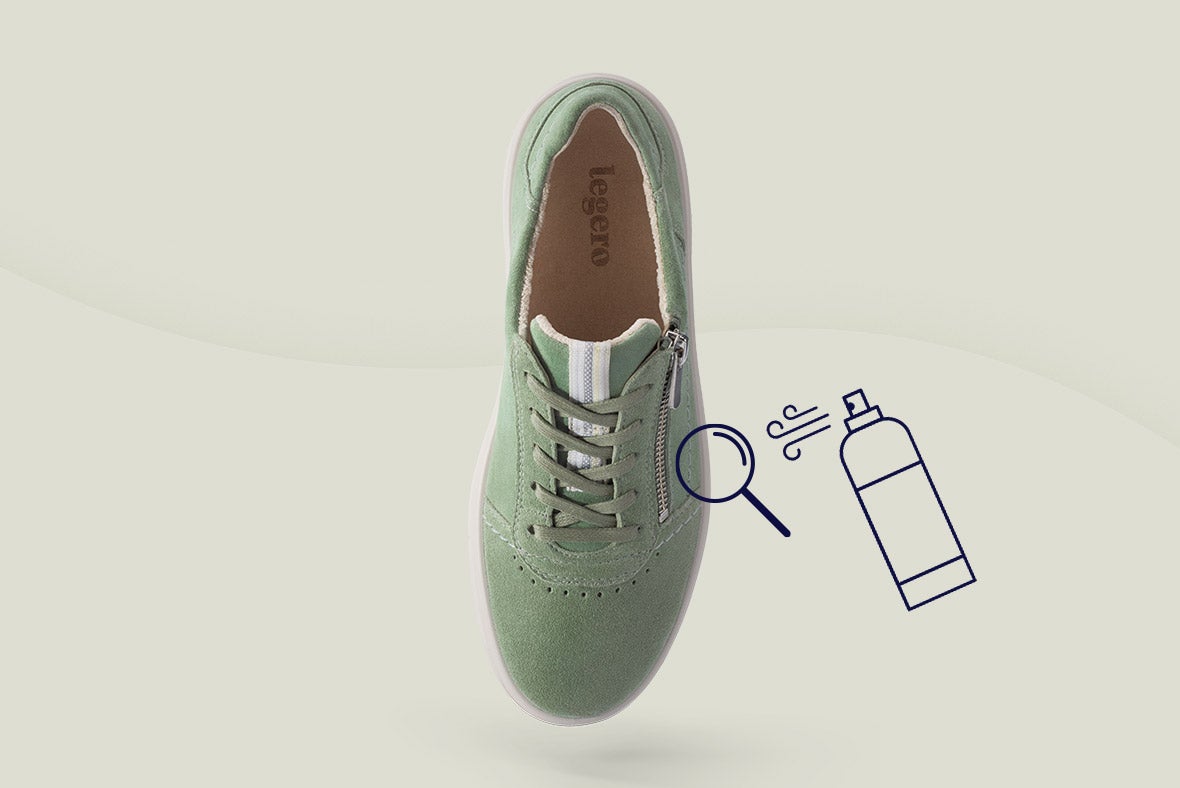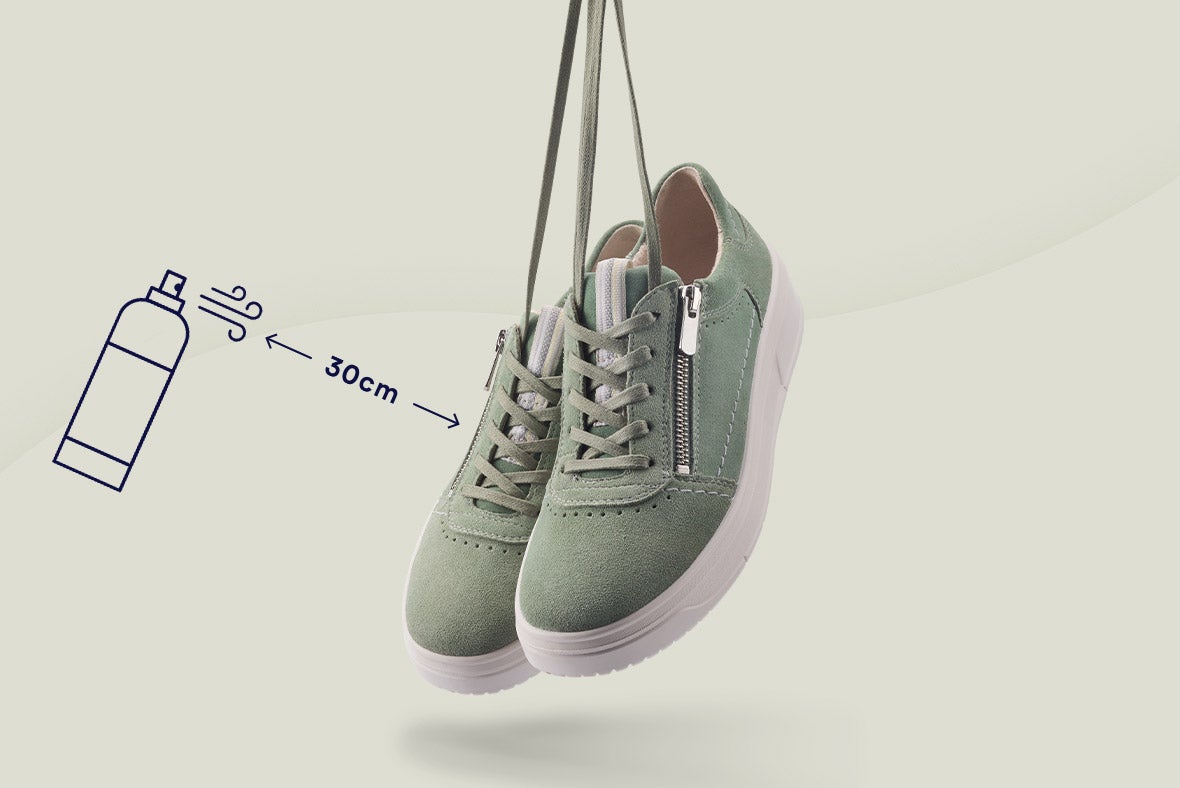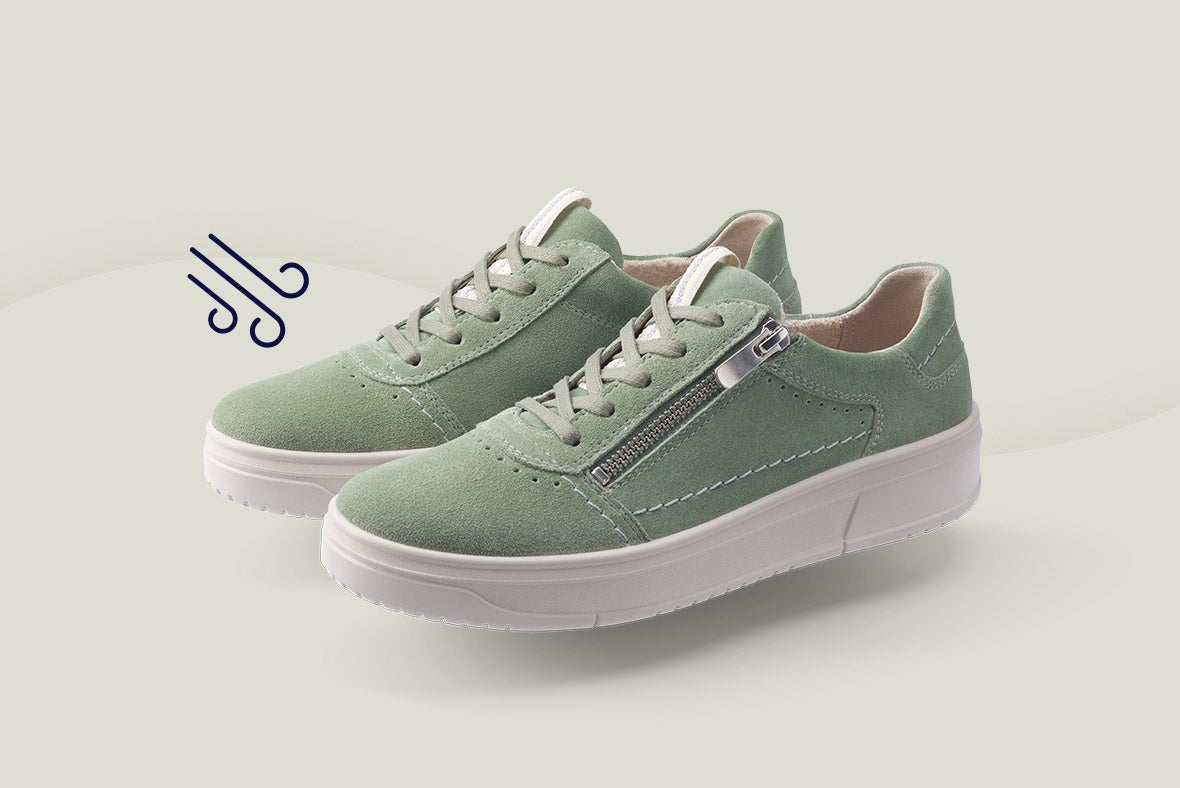How to waterproof shoes
Waterproofing shoes is an important step in protecting them from moisture, dirt and other external influences. This article explains what you need to bear in mind and what you should avoid at all costs.
Waterproofing shoes - basic instructions
Basically, waterproofing shoes - whether boots, outdoor shoes or trainers - is quick and easy. All you need is a waterproofing spray that is suitable for the material of your shoes. We'll show you how to waterproof your shoes properly:

1. Cleaning shoes
Remove any dirt and dust from your shoes so that the impregnating agent can adhere to the material. A damp cloth is best for cleaning most materials. However, suede should only be cleaned dry and with a suitable brush.

2. Test the impregnating agent
Read the instructions for use on your product and carry out a test on an inconspicuous area of the shoe to ensure that the impregnating agent does not adversely affect the material.

3. Waterproofing the shoes
Spray the shoes with the waterproofing spray at a distance of approx. 30 cm using wiping movements. A thin layer is sufficient.

4. Allow the shoes to dry
Let the shoes dry for several hours – at least until the smell of the spray has disappeared. It is best to stuff the shoes with newspaper so that the moisture can be absorbed and place them in a dry place at room temperature. However, do not place the shoes on or near a radiator: the high temperature can cause the material to deform or crack!
Please note: Some materials require a special procedure. If you would like to impregnate one of the following materials, you will find the appropriate instructions in the corresponding section:
Shoes are particularly often exposed to moisture and dirt in autumn and winter. Protective waterproofing is important now.
Dos and Don'ts when waterproofing shoes
Some mistakes are made time and time again when waterproofing - and these can not only damage your shoes, but also your health. Here are the most important dos and don’ts when waterproofing shoes:
- Cleaning shoes: Do not neglect to thoroughly clean your shoes prior to impregnation. Only then can the impregnation work properly.
- The right product: Do not use a polish that is not suitable for the specific material of your shoes.
- Do not spray too much: It is sufficient to wet the shoe with a thin film. Often too much is sprayed - but more is not more when imprinting! No drops should form.
- Waterproofing outdoors: Conventional waterproofing sprays should not be used indoors so that you do not inhale the vapours. It is therefore best to go outside the door or onto the balcony. Pump sprays, foams, creams or impregnating agents without propellants, on the other hand, can also be used indoors.
Waterproofing instructions for special materials

Waterproofing nappa leather (smooth leather)
Smooth leather shoes should be cared for from time to time so that they retain their appearance and softness. You should carry out these steps before waterproofing:
- Clean the leather with a damp cloth.
- Apply a shoe polish in a suitable colour before either polishing the shoes with a brush or simply rubbing in the shoe polish for a matt finish. You do not need to carry out this step before every time you waterproof your shoes.
- Waterproof the shoes as described above and then allow them to dry thoroughly.

Waterproofing suede leather
These sensitive types of leather require special treatment:
- Wipe the leather dry to remove dust and dirt. Attention: Shoe polish is taboo for this type of leather!
- Use a waterproofer especially made for suede, suede or suede leather. These are usually combination sprays for care, colour refreshing and impregnation in one. Then leave the shoes to dry.

Waterproofing textile shoes
Textiles can absorb dirt and stains more easily than other materials. Therefore, a more thorough cleaning is often necessary before waterproofing your textile shoes.
- Clean the shoes with a soft brush or use a cloth to wipe them with lukewarm water. The latter is particularly suitable for fine-meshed textiles or mesh fabric.
- Waterproof the shoes with a universal impregnating spray and then allow them to dry thoroughly.
Frequently asked questions about waterproofing shoes
How often should shoes be waterproofed?
The more often you wear your shoes, the more often you should waterproof them. A good guideline is two to three times per season - but especially in autumn and winter, when shoes often get wet, you can waterproof up to three times a week.
Why should shoes be waterproofed?
When shoes get wet, the material swells and can become deformed. You can make shoes waterproof by waterproofing them: The film of waterproofing agent protects against moisture and dirt so that the quality of the material is maintained for longer. Another effect: your feet stay dry and warm.
Which shoes should be waterproofed?
In principle, all shoes that are worn outdoors and are therefore exposed to the elements should be waterproofed. In autumn and winter, protection through waterproofing is particularly important.
Do I need to waterproof GORE-TEX shoes?
When the GORE-TEX shoes are new, waterproofing is not necessary as the membrane itself is waterproof. However, waterproofing is useful later on to maintain the hydrophobic properties of the upper material. This prevents the upper material from absorbing moisture.
Which shoes should not be waterproofed?
None - you can waterproof all shoes that are worn outside.
Is waterproofing spray really necessary?
It doesn't necessarily have to be a spray (there is also waterproofing foam or cream), but a waterproofing agent is an essential part of shoe care.
Are new shoes waterproofed?
At legero, all new shoes are waterproofed and therefore do not need to be impregnated before they are worn for the first time. However, after repeated wear and especially in autumn and winter, waterproofing is important to ensure that the shoes last a long time.
What comes first: shoe polish or waterproofing?
Most waterproofing sprays are nano products that form a protective layer on the surface of the material. If you were to impregnate first, the shoe polish could then destroy the protective film. The following therefore applies: first shoe polish, then (nano) waterproofing spray.
What can you use instead of waterproofing spray?
If you don't want to use a conventional waterproofing spray, you can use a waterproofing cream that is simply dabbed on. There are also waterproofing foams. Both are good alternatives, especially for allergy sufferers and people without a balcony or terrace, as sprays can be harmful to health and should always be used outdoors.
